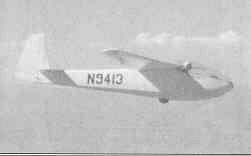Length 15 m | First flight 1970 | |
 | ||
The Applebay GA-II Chiricahua is an American high-wing, single-seat, FAI Standard Class glider that was designed and constructed by George Applebay, first flying in 1970.
Contents
Design and development
Applebay started the Chiricahua as a standard class sailplane in 1959, but the aircraft was not completed for 11 years, first flying in 1970. It was named for the Chiricahua people, a group of Apache Native Americans.
The aircraft is made from wood and covered in a combination of plywood and doped Ceconite. Its 15 m (49.2 ft) span wing employs a Göttingen 549 airfoil and features Schempp-Hirth style top surface airbrakes. As originally specified for the standard class, the landing gear was a fixed monowheel.
Only one example was built.
Operational history
On 7 July 1974 at New River, Arizona the prototype, N9413, was involved in an accident and substantially damaged. The aircraft was on a soaring flight, ran out of lift, made an attempted landing on a road in a 20 kn (37 km/h) crosswind and struck a tree. The 24-year-old pilot, who had 32 hours of flying time total, including 11 hours on type, was not injured. The aircraft has since been re-registered as N53MB.
Specifications (GA-II)
Data from Sailplane Directory
General characteristics
Performance
